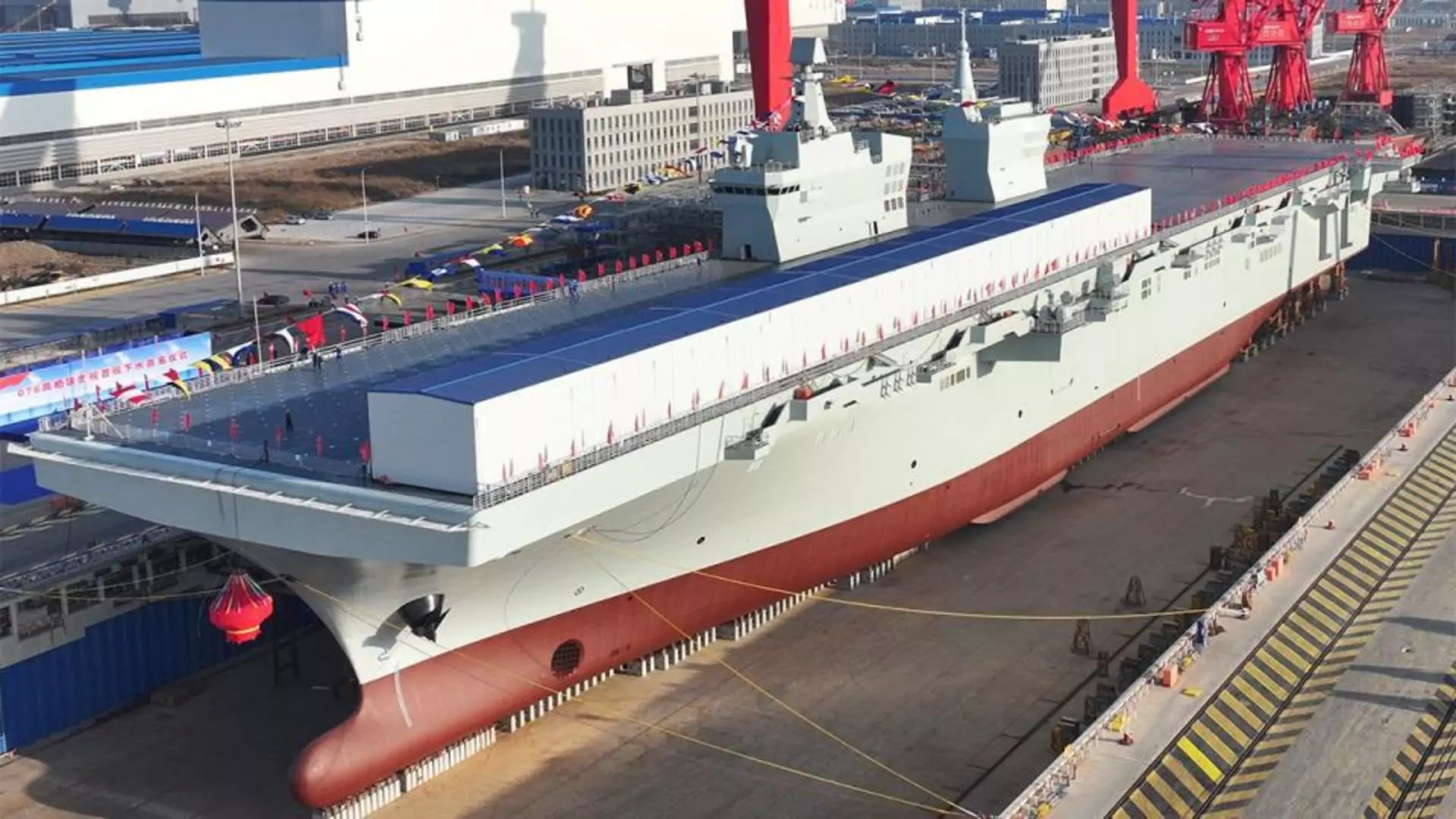In a bold demonstration of its growing military might, China has introduced the world’s largest amphibious assault ship and hinted at advancements in its aerial capabilities with the possible debut of a sixth-generation stealth fighter jet, reportedly named the J-36. These developments come amidst increasing global concerns over Beijing’s expanding defense capabilities.
China’s Expanding Military Budget and Shipbuilding Dominance
China is modernizing its military at an unprecedented pace, marked by a 7.2% increase in defense spending in 2024, bringing its budget to 1.67 trillion yuan. As the world’s largest shipbuilder, China’s shipbuilding capacity now dwarfs that of the United States by a staggering 230 times, further solidifying its maritime dominance.
The Type 076 Amphibious Assault Ship
On Friday, the Type 076 amphibious assault ship was launched at a shipyard in Shanghai, according to a statement from the People’s Liberation Army Navy (PLAN). Named Sichuan, after the southwestern Chinese province, the ship is considered a “key asset” in advancing the PLAN’s transformation and expanding its operational capabilities in distant seas.
Features of the Sichuan:
- Full-Load Displacement: Over 40,000 tonnes, making it the world’s largest amphibious assault ship.
- Dual-Island Superstructure: Supports a wide range of operations with a full-length flight deck.
- Electromagnetic Catapult and Arrestor Systems: Enables the launch and recovery of fixed-wing aircraft, helicopters, and amphibious equipment.
With these advanced systems, the Sichuan is only the second vessel globally, alongside the USS Gerald R. Ford of the US Navy, to feature electromagnetic catapult technology. This capability positions China as a formidable naval power on the global stage.
J-36 Stealth Fighter: A Game-Changer in Aerial Warfare
On Thursday, unverified images of a new sixth-generation fighter jet, reportedly named the J-36, circulated widely online. The aircraft, seen flying over Chengdu in daylight and accompanied by a fifth-generation J-20 fighter jet, features a tailless triangular design.
Key Implications of the J-36:
- Enhanced Stealth and Maneuverability: The unique design minimizes radar detection while improving flight dynamics.
- Global Aerial Dominance: The speculation is rife that the J-36 could challenge US aerial superiority.
- Strategic Timing: The jet’s appearance coincided with the birthday of Mao Zedong, founder of the People’s Republic of China, signaling deliberate messaging by Beijing.
While official confirmation is pending, the unveiling of the J-36 follows the introduction of the Baidi White Emperor ‘B Type’ fighter jet by China’s Aviation Industry Corporation at the Zhuhai Airshow in November. These advancements highlight China’s rapid progression in military aviation technology.
China’s Rise in the Defense Sector
China’s military modernization began in earnest during the 1980s under Deng Xiaoping, with a focus on updating doctrine, organizational structure, and weapons systems. This long-term effort has positioned China as a dominant force, especially in the Indo-Pacific region, traditionally under US influence since the Second World War.
Beijing’s rapid advancements in naval and aerial technologies are shifting the balance of power in the Indo-Pacific. The launch of the Sichuan amphibious assault ship and the emergence of the J-36 fighter jet signal China’s intent to project power far beyond its borders. These developments are not only reshaping regional dynamics but also posing a direct challenge to US military dominance.




